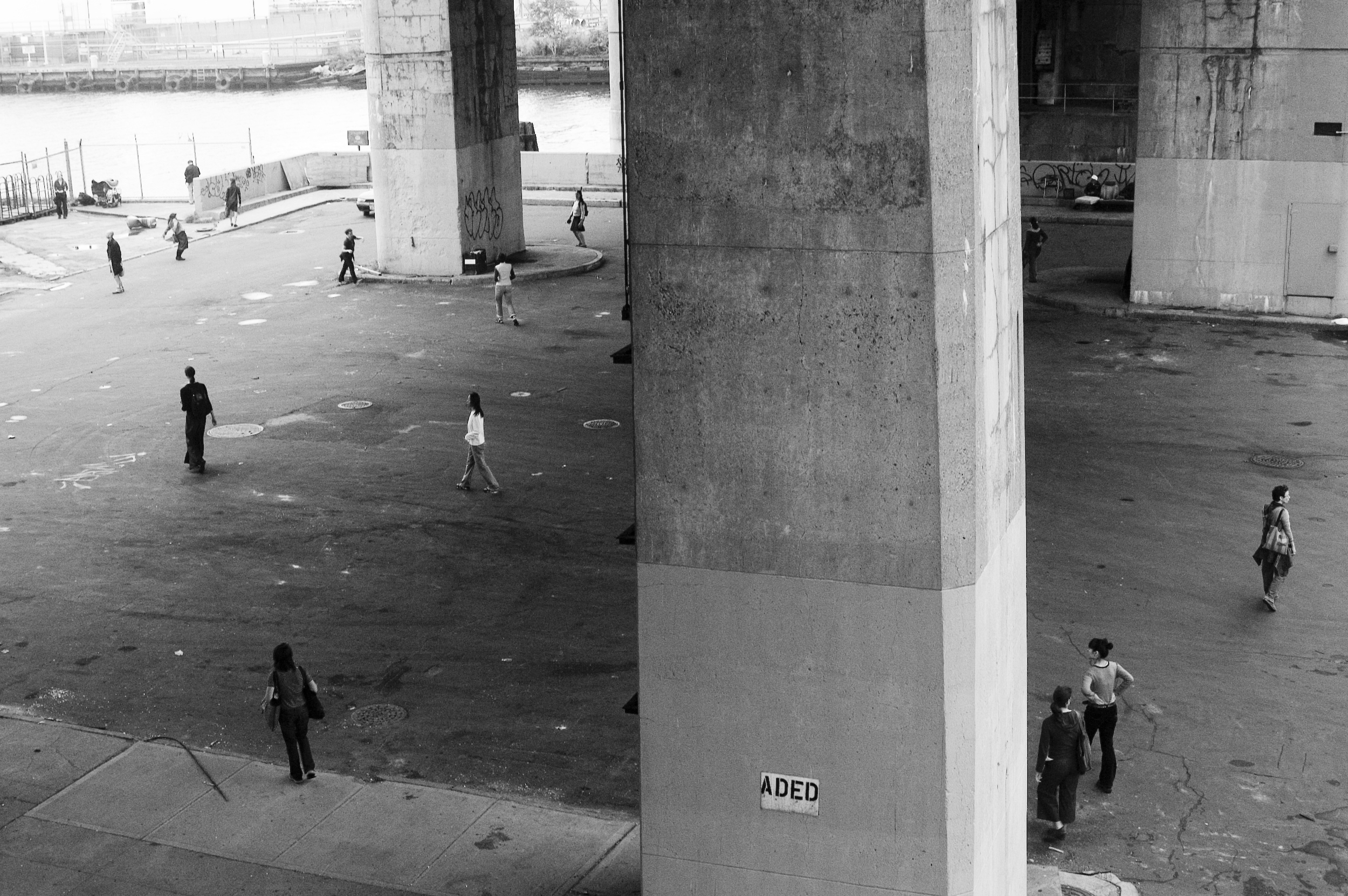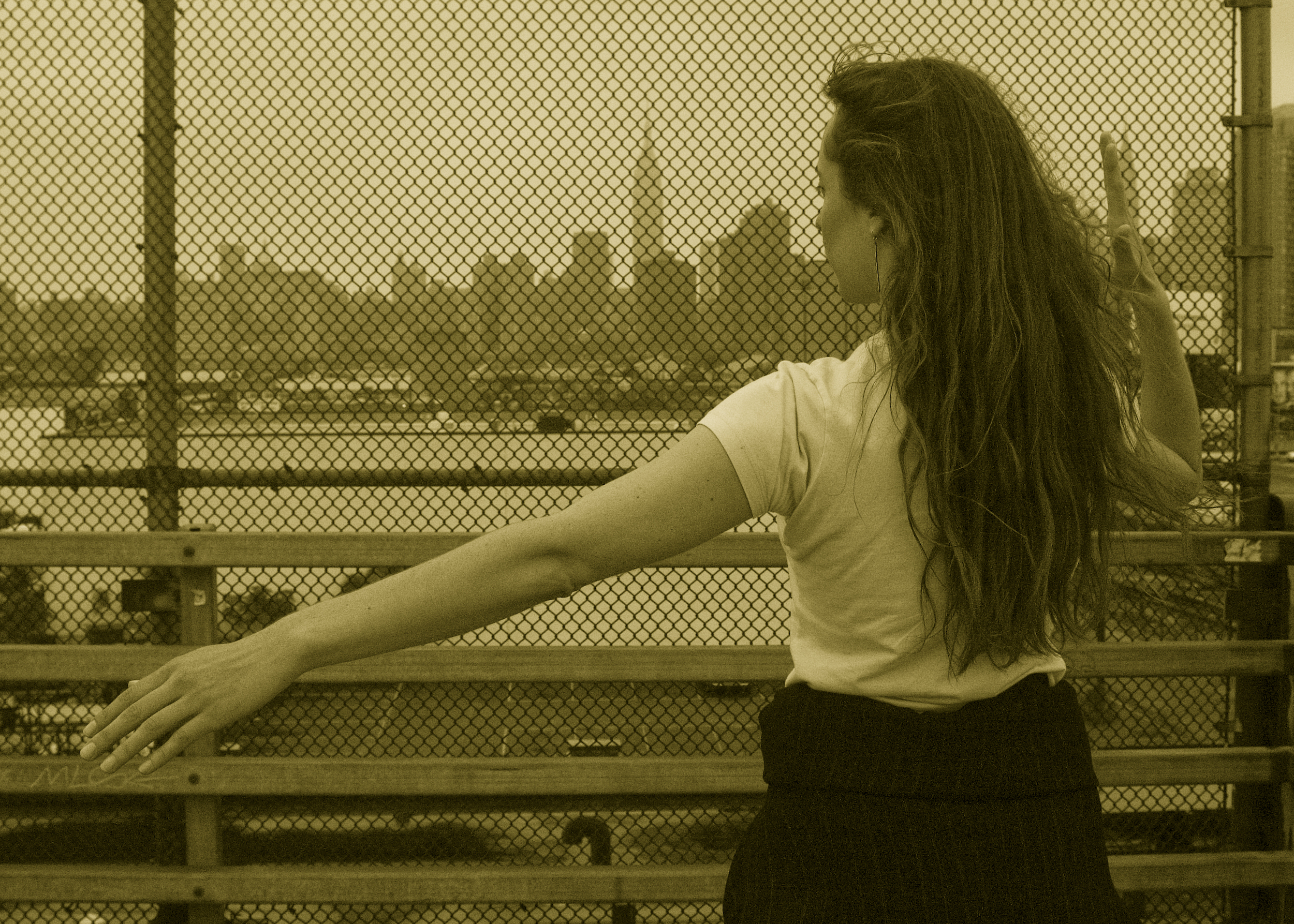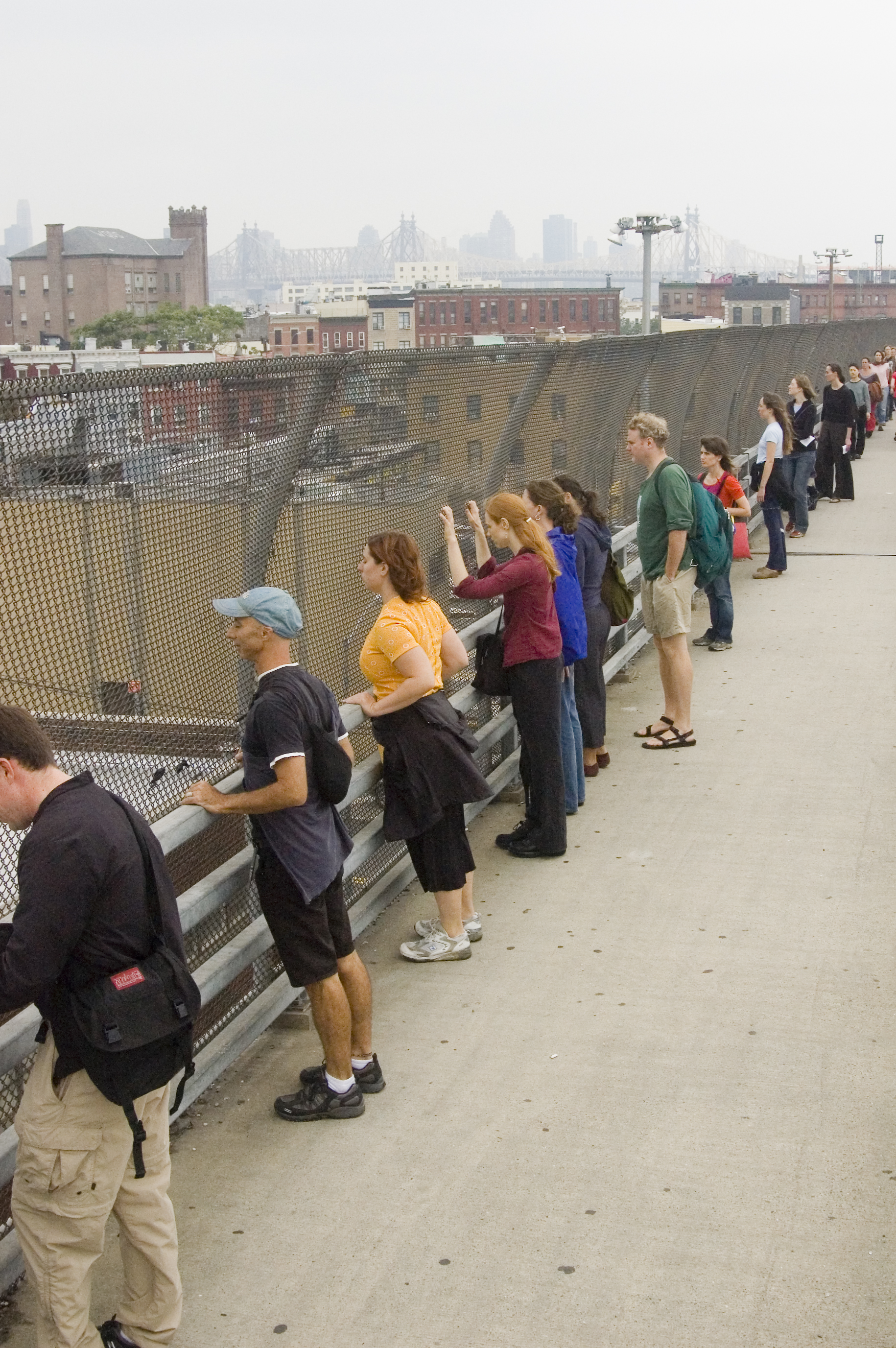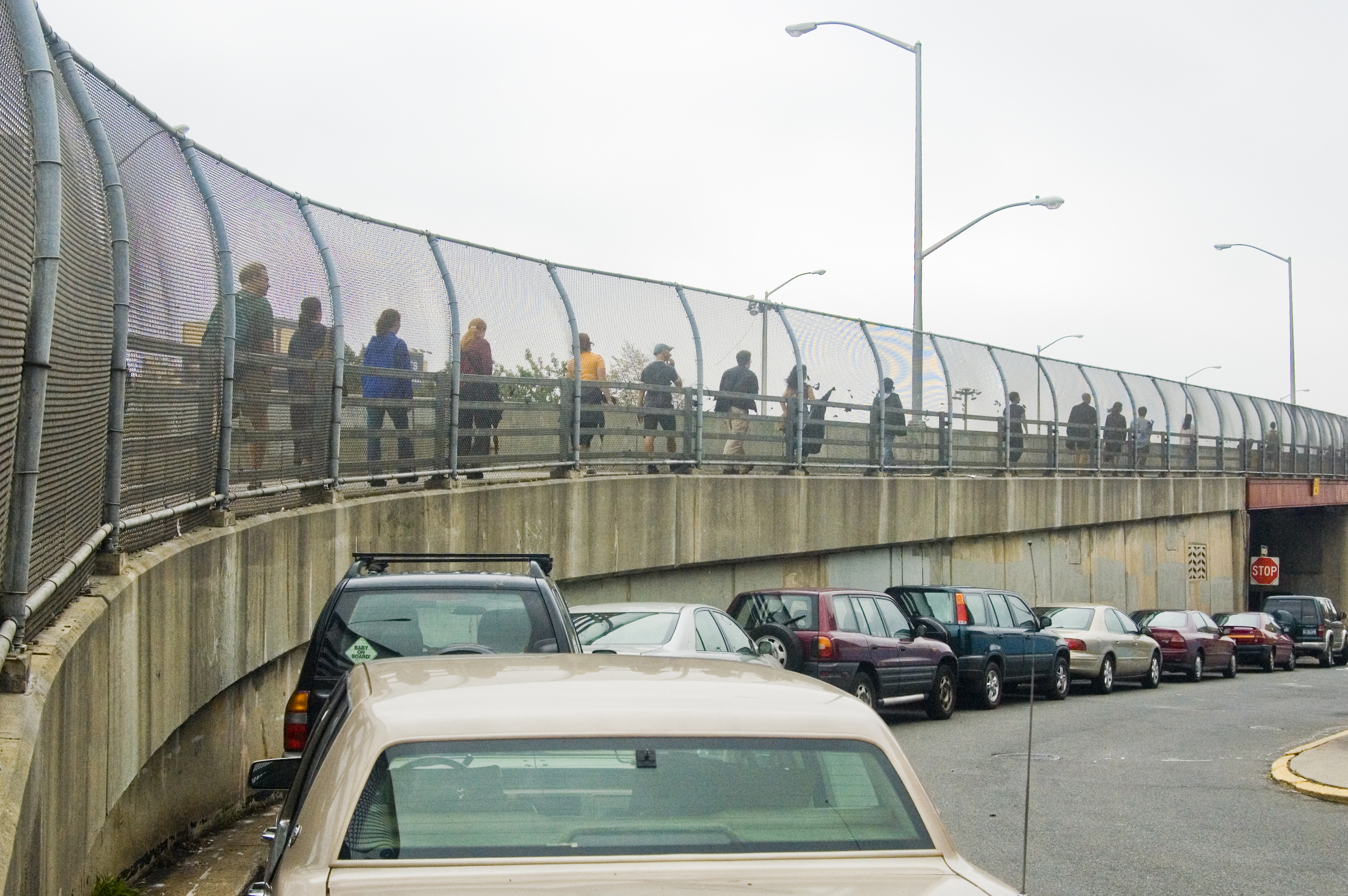The Language of the Listening Body (2006)
Hope Mohr and sound artist Michelle Nagai worked with a group of performers exploring an active listening and moving practice in the urban environment of New York City. They hosted studio practice and public “soundwalks”—walking meditations where the object is to maintain a high level of sonic awareness. During each soundwalk, members of the public joined them as they traveled through the city listening and moving. Made possible through a residency with the Interdisciplinary Laboratory of Art, Nature and Dance
(iLAND), a dance research organization founded by choreographer Jennifer Monson to connect dance and other performing arts with scientific and environmental studies.
Core Creative Questions
What is a language—both verbal and physical—for the intimate experience of listening?
What is it like to balance somatic awareness with awareness of the environment?
"The listening body is legibly more aware, more open, and more receptive than the non-listening body. The listening body moves… differently: less myopic in its seeing, less linear in its trajectory through space, softer in tonus. A listening body is engaged in finding its constantly changing relationship to the environment. The listening body constantly locates itself in space and time. Moving in silence as a group with no apparent ‘task’ felt powerfully subversive and was visually arresting...The language of the listening body has as much to do with placement of the body in space as withphysical vocabulary. The listening body listens not only with the ears, but listens for a relationship to the environment, and places itself accordingly in space."
--Hope Mohr, The Language of the Listening Body, Women & Performance: A Journal of Feminist Theory, 2006
"A question of method: Intentional versus unconscious physical responses to noise. Deconstructing the decision to move. The critical moment is the gap between receiving sensory information and reacting to it through movement. How will we work with that gap, inside it? Unconscious responses feel more authentic, more direct. But it seems impossible to avoid the will."
--Hope Mohr, On the Language of the Listening Body, Movement Research's Critical Correspondence



